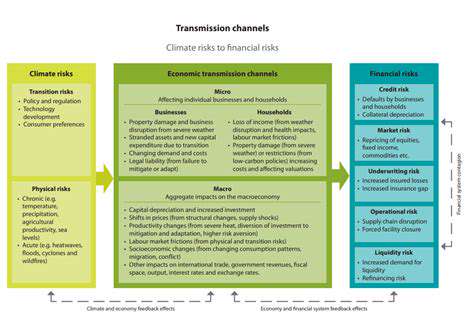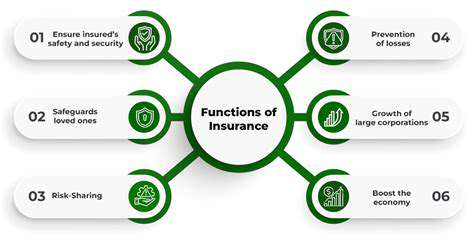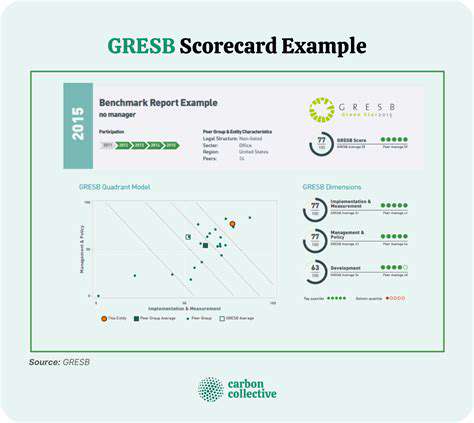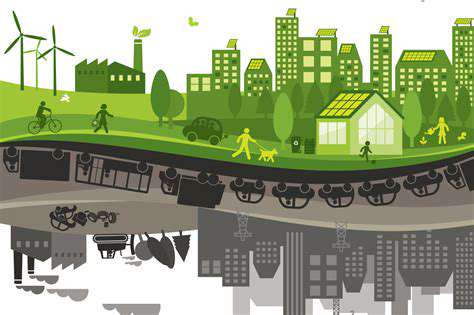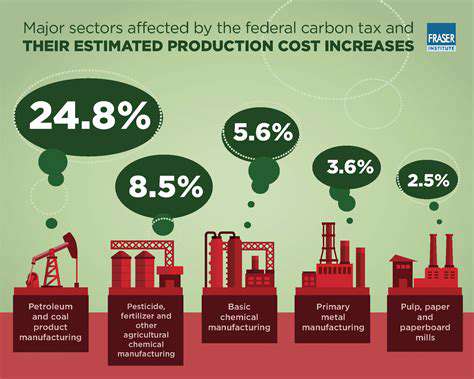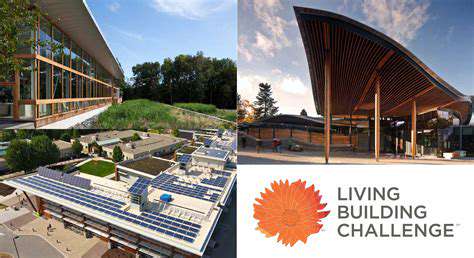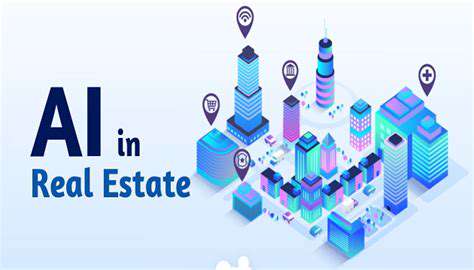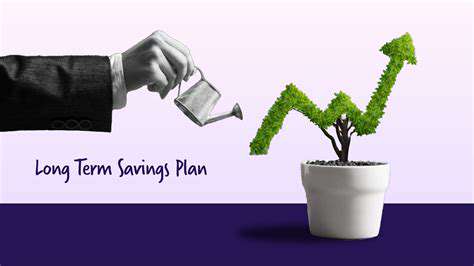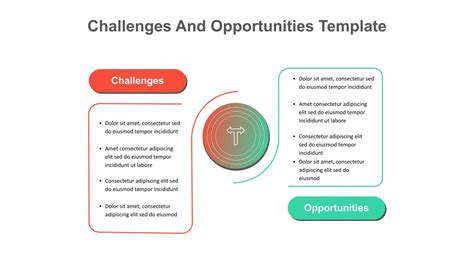Real Estate Development in the Age of Climate Change
Adapting to Rising Sea Levels and Coastal Erosion
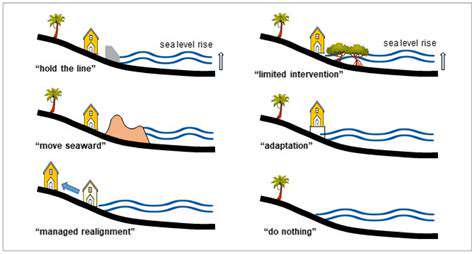
Coastal Communities and Infrastructure
From fishing villages to bustling port cities, coastal settlements globally grapple with an existential threat as ocean waters encroach further inland each year. The very foundations of these communities - homes, schools, hospitals and transportation networks - face unprecedented risks from relentless tidal surges and increasingly frequent flood events. Recent studies show coastal flooding events have doubled in frequency since 2000, displacing millions and causing billions in damages annually. Local governments now race against time to implement protective measures before entire neighborhoods become uninhabitable.
Effective adaptation requires nuanced approaches tailored to each region's unique geography. Engineers must evaluate whether to fortify existing structures with elevated foundations and flood barriers or strategically relocate critical infrastructure to higher ground. Coastal geologists emphasize that blanket solutions often fail, as sediment composition and tidal patterns vary dramatically even within small geographic areas. Successful plans integrate traditional knowledge from longtime residents with cutting-edge hydrological modeling.
Protecting Coastal Ecosystems
Nature's own defense systems - mangrove forests, oyster reefs and salt marshes - have shielded coastlines for millennia. These living buffers not only dampen storm surges but also provide nurseries for marine life and sequester carbon at remarkable rates. Yet many have been destroyed by development, leaving coasts vulnerable. Restoration projects from Louisiana to Bangladesh demonstrate how revived wetlands can reduce wave energy by over 70% during major storms.
Ecologists now advocate for living shorelines that combine native vegetation with minimal structural elements, proving more effective and sustainable than concrete seawalls in many locations. The intricate root systems of marsh plants stabilize sediment while filtering pollutants - benefits that multiply when adjacent ecosystems remain connected. This systems approach recognizes that fragmented conservation efforts often yield limited results.
Developing Innovative Solutions
Breakthrough materials and designs are emerging to address sea level challenges. Dutch engineers pioneer amphibious architecture that floats during floods, while Japanese researchers develop porous concrete that reduces wave impact. Some coastal cities experiment with underground water storage systems to alleviate flooding while creating freshwater reserves. Such innovations must balance immediate protection with long-term sustainability, as poorly designed barriers can worsen erosion elsewhere.
Interdisciplinary teams are crucial, combining coastal engineers with marine biologists, climate scientists and landscape architects to create solutions that protect both communities and ecosystems. Pilot projects in vulnerable areas provide valuable data before large-scale implementation, allowing refinement based on real-world performance.
Sustainable Coastal Planning and Management
Forward-thinking coastal governance recognizes that short-term fixes often create long-term vulnerabilities. Comprehensive plans now incorporate century-scale sea level projections, identifying areas suitable for managed retreat while protecting zones viable for continued habitation. Zoning laws increasingly prohibit new construction in high-risk areas while incentivizing resilient design elsewhere.
Singapore's layered coastal defense strategy exemplifies this approach, combining reclaimed land, movable barriers and elevated development with strict land-use policies. Such frameworks acknowledge that effective adaptation requires balancing competing interests - protecting existing investments while preparing for inevitable changes. Community input ensures plans address cultural and economic realities rather than just technical specifications.
International Cooperation and Knowledge Sharing
No coastline exists in isolation - rising seas affect all nations, though impacts vary by geography and resources. Island nations facing existential threats have become laboratories for innovative solutions, with lessons applicable worldwide. The Pacific Resilience Partnership facilitates technology transfer between vulnerable nations, while the European Union coordinates flood prevention across member states.
Scientists emphasize that standardized monitoring protocols allow meaningful comparison of adaptation strategies across different coastal environments. Shared databases track everything from mangrove restoration success rates to seawall durability, helping communities avoid repeating others' mistakes. This global knowledge network accelerates progress against a challenge that respects no borders.
Integrating Sustainable Building Materials and Practices
Integrating Sustainable Building Materials
The construction industry's shift toward eco-friendly materials represents more than environmental responsibility - it's becoming a competitive necessity. Mass timber construction now rivals steel and concrete in high-rises, sequestering carbon while offering faster assembly times. Recycled materials find new life as everything from insulation (denim scraps) to countertops (reclaimed glass). Innovators even transform industrial byproducts like fly ash into high-performance concrete additives, reducing landfill waste while improving material properties.
Performance often surpasses conventional options - hempcrete provides superior moisture regulation while mycelium-based insulation offers exceptional fire resistance. These materials frequently require less energy to produce and transport, reducing a building's embodied carbon from the outset. Early adopters report unexpected benefits, like improved indoor air quality from non-toxic materials that benefit occupant health.
Sustainable Design Principles in Real Estate Development
Truly sustainable design considers a structure's entire lifecycle. Architects now employ passive design strategies that leverage a site's natural assets - orienting buildings to maximize winter sunlight while minimizing summer heat gain. Green roofs and living walls manage stormwater while reducing urban heat island effects. Smart glass adjusts tint to optimize daylighting without excessive heat transfer, reducing mechanical system loads.
The most successful projects integrate these elements holistically rather than as isolated features. A building's form, materials and systems should work in concert with its microclimate and intended use. Post-occupancy evaluations reveal how occupants actually use spaces, allowing continuous improvement in future designs.
The Economic Advantages of Sustainable Practices
While sustainable projects may carry 1-3% higher upfront costs, they typically deliver 10-20% operational savings annually. Energy-efficient buildings command premium rents and experience lower vacancy rates as tenants recognize the value of healthier, more comfortable spaces. Studies show employees in green-certified offices demonstrate 15% higher productivity and 30% fewer sick days - benefits that translate directly to corporate bottom lines.
Investors increasingly screen for sustainability metrics, recognizing that green buildings maintain value better during market fluctuations. Municipalities often provide density bonuses or expedited permitting for sustainable projects, further improving returns. The business case grows stronger as energy prices rise and sustainability becomes a market expectation rather than a differentiator.
Implementing Green Building Certifications
Third-party certifications like LEED and WELL provide frameworks for comprehensive sustainability achievement. Beyond environmental metrics, newer standards emphasize occupant health through features like circadian lighting and biophilic design. Certification processes have evolved to better account for regional differences - what constitutes sustainable water use varies dramatically between Phoenix and Portland.
Savvy developers use certification as a design tool rather than just a marketing badge, engaging raters early to maximize point opportunities. Some jurisdictions now require certification for public buildings, while private developers leverage it to access green financing options with favorable terms.
The Role of Technology in Sustainable Construction
Digital tools revolutionize sustainable construction at every phase. Building information modeling (BIM) allows teams to optimize designs for energy performance before breaking ground. Drones conduct site surveys with minimal disturbance, while AI-powered logistics platforms optimize material delivery routes to reduce emissions. On-site robotics handle repetitive tasks with precision, minimizing material waste common in manual processes.
Emerging technologies like 3D printing enable complex geometries that use less material without sacrificing strength. Blockchain-based material passports track components throughout their lifecycle, facilitating future reuse or recycling. These innovations collectively drive down the environmental impact of the built environment.
Addressing Waste and Recycling in Construction
The construction industry generates nearly 30% of global waste, but pioneering firms demonstrate this needn't be inevitable. Prefabrication in controlled factory environments can reduce onsite waste by up to 90% compared to traditional methods. Deconstruction - carefully dismantling buildings to salvage materials - is gaining traction where landfill fees incentivize alternatives.
Some developers maintain digital inventories of building materials, allowing future architects to mine structures for reusable components. Others partner with artists and manufacturers to repurpose demolition debris into new products. These closed-loop approaches transform waste streams into valuable resources while reducing demand for virgin materials.
Community Engagement and Education
Truly sustainable development requires community buy-in from the outset. Forward-thinking developers conduct neighborhood workshops to understand local priorities and concerns, often uncovering innovative solutions in the process. Some projects incorporate community gardens or shared tool libraries that build social resilience alongside environmental benefits.
Educational campaigns help residents maximize sustainable features, whether proper recycling protocols or optimal use of energy systems. When communities understand both the why and how behind sustainable design, they become active partners in achieving environmental goals. This engagement often sparks broader sustainability initiatives beyond individual projects.
Designing for Extreme Weather Events

Understanding the Impact of Extreme Weather Events
The increasing frequency of billion-dollar disaster events underscores the urgent need for climate-resilient design. Detailed risk assessments now consider compound threats - how heatwaves might coincide with power outages, or how wildfire smoke could complicate hurricane evacuations. Urban planners utilize climate projection data to identify neighborhoods most vulnerable to multiple overlapping hazards. This layered understanding informs targeted interventions rather than one-size-fits-all solutions.
Historical analysis reveals patterns in disaster impacts - elderly populations face greater heat risk, while low-income communities often occupy flood-prone areas lacking infrastructure investment. Forward-looking designs address these inequities by prioritizing protective measures where they're needed most. Climate models suggest some regions may experience weather extremes outside recorded history, requiring designs that accommodate unprecedented conditions.
Designing Resilient Infrastructure
Resilience begins below ground with robust utility systems - buried power lines resist wind damage, while permeable pavements reduce flood risks. Buildings in hurricane zones incorporate impact-resistant glazing and reinforced roof connections, while seismic regions employ base isolation systems. Singapore's underground drainage and storage system can hold 15,000 Olympic-sized swimming pools of stormwater, preventing floods while creating water reserves.
Nature-based solutions complement engineered systems - urban forests moderate temperatures while bioswales filter stormwater. The most effective designs combine gray and green infrastructure, like Seattle's seawall that incorporates habitat features for juvenile salmon. Resilient systems also plan for failure modes, ensuring backup systems activate when primary systems falter.
Prioritizing Human Safety and Well-being
Effective emergency design considers human behavior under stress. Wide, clearly marked evacuation routes with multiple egress points prevent bottlenecks during crises. Community shelters integrate backup power, clean water access and medical facilities while accommodating pets and medications. Tokyo's disaster preparedness centers train residents in emergency response while testing new shelter designs under simulated conditions.
Passive survivability features ensure buildings remain habitable during extended outages - natural ventilation strategies, thermal mass for temperature regulation and daylight-optimized layouts. Post-disaster studies consistently show that communities with robust social networks fare better, prompting designers to incorporate gathering spaces that strengthen neighborhood ties before disasters strike.
Addressing Economic Impacts
Business continuity planning integrates into resilient design through features like elevated server rooms and flood-proof inventory storage. Distributed energy systems (solar + storage) keep critical operations running during grid failures. Manufacturing facilities in tornado-prone regions now install prefabricated safe rooms that double as break areas during normal operations.
Financial resilience mechanisms include parametric insurance that triggers automatic payouts when specific weather thresholds are met, enabling faster recovery. Some municipalities establish recovery loan funds in advance, avoiding delays in post-disaster financing. These economic considerations are increasingly baked into development standards rather than treated as afterthoughts.
Utilizing Innovative Technologies
AI-powered early warning systems now provide location-specific alerts with lead times that save lives. Sensor networks monitor infrastructure stress in real time, predicting failures before they occur. After California's wildfires, drones equipped with multispectral cameras helped assess damage and plan rebuilding while keeping crews out of dangerous areas.
Digital twin technology creates virtual replicas of cities to simulate disaster impacts under various scenarios. These models help optimize evacuation routes, shelter locations and resource distribution before emergencies arise. The most advanced systems incorporate real-time weather data to provide dynamic guidance during unfolding events.
Sustainable Design Practices
Resilience and sustainability converge in designs that address immediate threats while reducing long-term environmental impact. Hurricane-resistant buildings employ recycled steel framing and photovoltaic roofs that power essential systems during outages. Flood-adaptive structures use sustainably harvested timber that withstands occasional inundation without structural damage.
Rotterdam's water squares demonstrate multifunctional design - sunny plazas transform into stormwater basins during heavy rains, serving community needs year-round. Such solutions acknowledge that climate adaptation needn't sacrifice quality of life when creatively implemented. The most forward-looking projects anticipate how climate mitigation success might alter future adaptation needs, building in flexibility to adjust strategies over time.
Prioritizing Community Resilience and Equity
Building Equitable Communities
Equitable development requires confronting historical patterns of disinvestment that left marginalized communities disproportionately vulnerable. Inclusive planning processes actively seek input from traditionally excluded groups through culturally appropriate engagement methods. Some cities employ community land trusts to ensure permanent affordability, while others mandate inclusionary zoning to prevent displacement. Minneapolis' 2040 plan abolished single-family zoning citywide to increase housing options near opportunity centers.
True equity extends beyond housing to access - reliable transit connecting residents to jobs, fresh food markets in food deserts, and healthcare facilities in underserved areas. The most effective initiatives combine physical improvements with supportive services like job training and small business incubators. This comprehensive approach recognizes that placemaking and people-focused investments must advance together.
Sustainable Development Practices
Community resilience starts with sustainable infrastructure designed for local conditions. Arid regions prioritize water recycling systems, while coastal communities invest in natural flood barriers. Philadelphia's green city plan has reduced combined sewer overflows by 80% through distributed green infrastructure, simultaneously creating jobs and beautifying neighborhoods.
Energy democracy initiatives allow residents to own renewable energy systems rather than just consume from distant power plants. Community solar programs enable renters and low-income households to benefit from clean energy typically accessible only to property owners. These models demonstrate how sustainability can drive both environmental and economic justice when properly structured.
Addressing Infrastructure Needs
Equitable infrastructure investment corrects historical underfunding in marginalized communities. Strategic upgrades replace lead pipes in low-income neighborhoods first, while complete streets redesigns prioritize pedestrian safety near schools and senior centers. Some cities employ targeted utility subsidies ensuring essential services remain affordable during climate emergencies.
Resilient infrastructure also means redundant systems - when Miami installed backup water pumps in vulnerable neighborhoods, it prevented service disruptions that previously hit these areas hardest during storms. Such targeted investments recognize that vulnerability often concentrates in specific geographic and demographic pockets requiring customized solutions.
Promoting Economic Opportunity
Inclusive economic strategies ensure development benefits create local wealth rather than extract it. Community benefits agreements guarantee local hiring and contracting for major projects, while small business incubators nurture neighborhood entrepreneurs. Some developments incorporate cooperative ownership models that give residents equity stakes in local enterprises.
Workforce development programs align training with upcoming project needs - before Seattle's light rail expansion, pre-apprenticeship programs prepared local workers for the construction jobs that followed. These initiatives demonstrate how smart planning can break cycles of poverty while building physical infrastructure. The most successful models create self-reinforcing systems where economic gains circulate within communities rather than leaking outward.
Read more about Real Estate Development in the Age of Climate Change
Hot Recommendations
- Sustainable Real Estate Design Principles
- AI in Real Estate: Streamlining the Buying Process
- Climate Risk Disclosure: A Must for Real Estate
- Climate Risk Analytics: Essential for Real Estate Investment Funds
- Modular Sustainable Construction: Scalability and Speed
- Real Estate and Community Disaster Preparedness
- Smart Buildings and Advanced Building Analytics for Optimal Performance
- Smart Waste Sorting and Recycling in Buildings
- Sustainable Real Estate: A Strategic Advantage
- AI in Real Estate Transaction Processing: Speed and Accuracy
